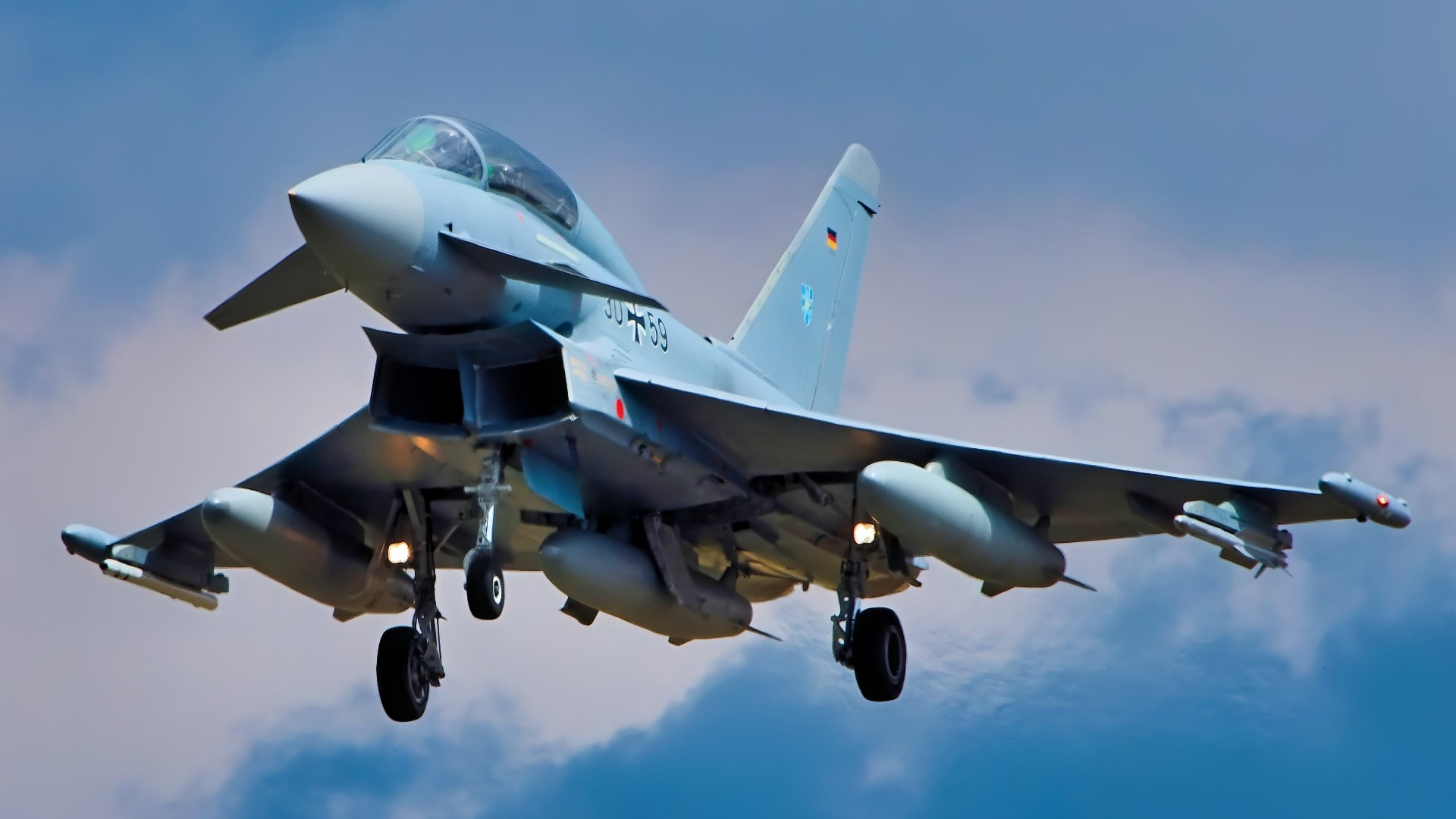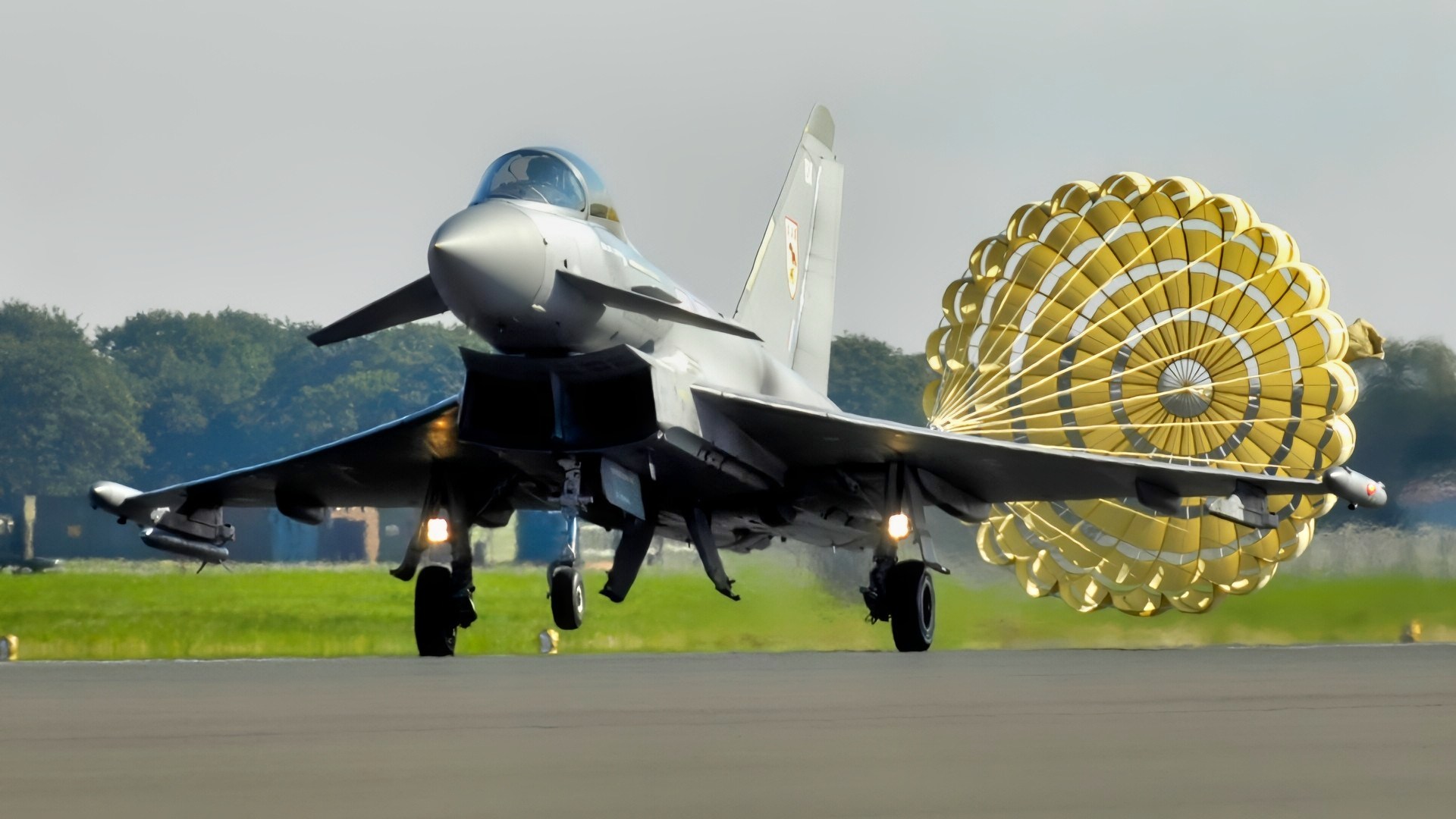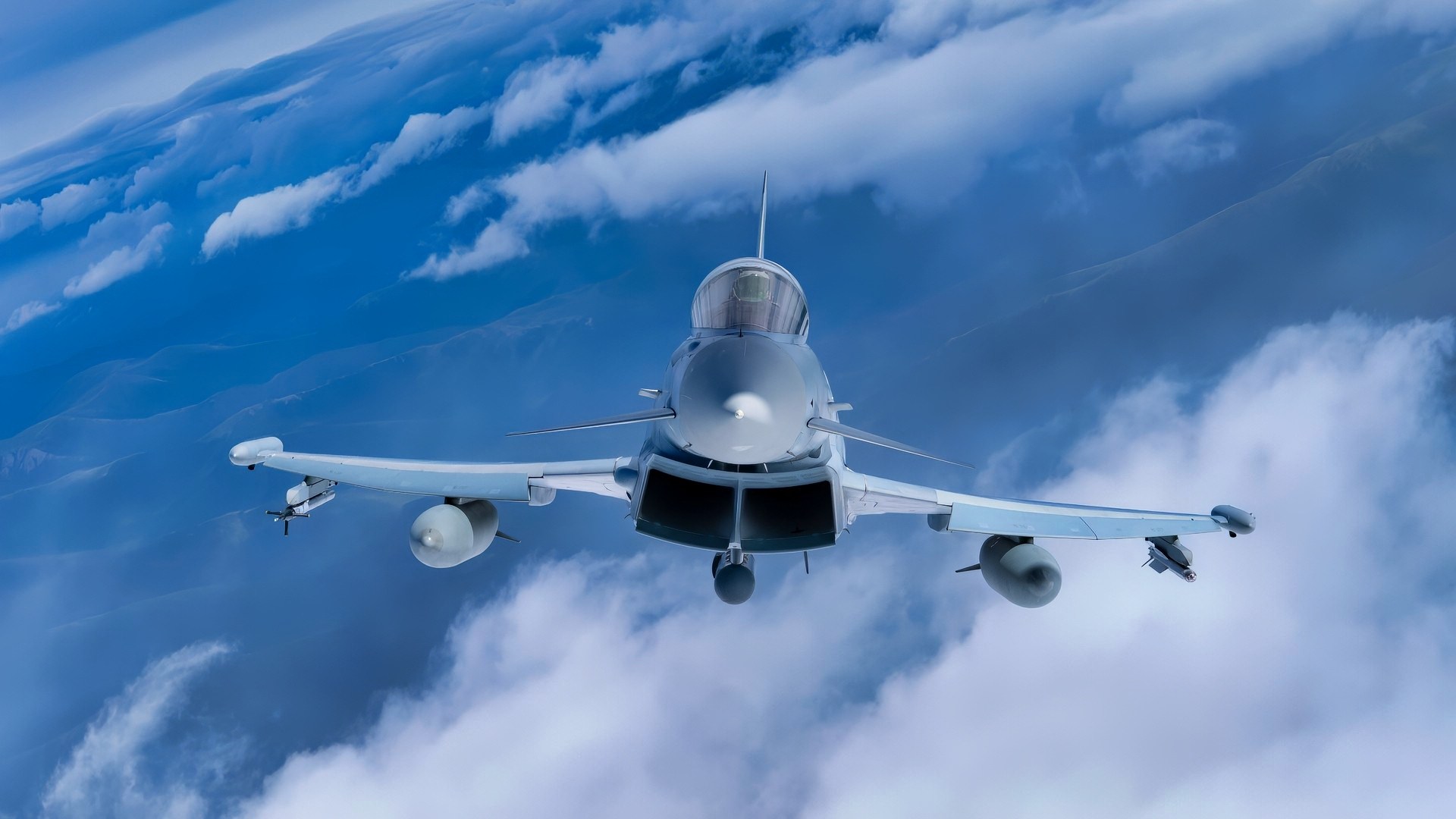Key Points and Summary – A comparison between Europe’s top 4.5-generation fighters, the Saab JAS 39 Gripen E and the Eurofighter Typhoon, reveals a close contest with distinct strengths.
-The single-engine Gripen E excels in cost-effectiveness, modularity, and potentially electronic warfare due to its newer architecture.

2017 Eurofighter Typhoon. Image Credit: Creative Commons.

Eurofighter Typhoon with Parachute. Image Credit: Creative Commons.
-The twin-engine Typhoon boasts superior raw power, speed, agility, and payload capacity.
-In a beyond-visual-range (BVR) fight, the outcome is uncertain, potentially favoring the Gripen’s advanced EW. However, in a close-range dogfight (WVR), the Typhoon’s superior thrust and maneuverability would likely give it the decisive edge.
JAS 39 Gripen E vs. Eurofighter Typhoon: Which European Fighter Jet Is Better?
The Saab JAS 39 Gripen is one of the most advanced fourth-generation fighter jets on the market. Its most recent variants boast advanced avionics and a high-performance powerplant.
On the other hand, the Eurofighter Typhoon was intended to be Europe’s main fourth-generation fighter.
Built as a joint effort by several countries, the Eurofighter sports advanced avionics of its own along with a deadly set of armaments.
Both aircraft are pitched as 4+-generation multi-role fighters, but which aircraft is actually superior?
Europe’s Strongest Fighters
The Gripen, developed by Sweden’s Saab, is a single-engine, lightweight fighter designed with affordability, flexibility, and ease of maintenance in mind.
Sweden’s defense strategy emphasizes independence and rapid response, so the Gripen was built to operate from short, rugged runways and be maintained by small teams.
It is a modular aircraft that allows for quick upgrades and the integration of new technologies, and it is optimized for dispersed operations and minimal logistical support.
In contrast, the Eurofighter Typhoon is a twin-engine, heavier aircraft developed by a consortium of European nations, including the United Kingdom, Germany, Italy, and Spain.
It was initially conceived as an air superiority fighter with secondary ground attack capabilities. The Typhoon is designed for high-speed, high-agility engagements and is deeply integrated into NATO’s strategic framework.
Its development prioritized raw performance, advanced avionics, and interoperability with allied forces.
Avionics and Electronics
When comparing avionics and sensor suites, both aircraft are equipped with state-of-the-art systems, but the Gripen E, the latest variant, benefits from a newer architecture.
It features the Raven ES-05 active electronically scanned array (AESA) radar, which offers high-resolution tracking and robust electronic warfare capabilities. Its electronic warfare suite includes both passive and active jamming systems, and it excels in sensor fusion and network-centric warfare.

JAS 39 Gripen Fighter from Back in 2017. Image Credit: Creative Commons.

JAS 39 Gripen. Image Credit: Creative Commons.
The Gripen’s helmet-mounted display allows for off-boresight targeting, giving it a significant advantage in close combat scenarios.
The Typhoon, particularly in its Tranche 3 and upgraded configurations, is equipped with the CAPTOR-E AESA radar, which has a wide field of regard and excellent tracking capabilities. Its Defensive Aids Sub-System (DASS) provides comprehensive electronic countermeasures, missile warning, and jamming capabilities.
While the Typhoon’s avionics are robust and proven, the Gripen’s newer software architecture and emphasis on electronic warfare give it a slight edge in terms of situational awareness and survivability.
Engine Performance
In terms of flight performance, the Eurofighter Typhoon clearly outperforms the Gripen. It is powered by two Eurojet EJ200 engines, producing a combined thrust of approximately 40,000 pounds.
This allows it to reach speeds over Mach 2 and sustain supercruise for extended periods.
Its thrust-to-weight ratio and advanced aerodynamics make it exceptionally agile, particularly in high-speed dogfights.
The JAS 39 Gripen E, powered by a single GE F414G engine, produces around 22,000 pounds of thrust. It can also reach speeds over Mach 2 and is capable of supercruise, though reportedly only for short periods.
While the Gripen is highly agile and benefits from relaxed stability and digital fly-by-wire controls, it cannot match the Typhoon’s raw power and maneuverability in close-range combat.
Armaments and Weaponry
When it comes to weapons and combat capability, both aircraft are formidable platforms. They can both carry the Meteor missile, which is considered one of the most advanced beyond-visual-range air-to-air missiles in the world.
The JAS 39 Gripen E is equipped with IRIS-T and AIM-120 AMRAAM for air combat, and it can deploy Taurus KEPD 350 cruise missiles, GBU-39 precision bombs, and RBS-15 anti-ship missiles. It has ten hardpoints for weapons and external stores.
The Eurofighter Typhoon carries a broader array of weapons due to its larger size and payload capacity. It can deploy Meteor, ASRAAM, and AMRAAM for air-to-air combat, and Storm Shadow, Brimstone, Paveway IV, and SPEAR 3 for ground attack missions.
It also has anti-ship capabilities with the Marte ER missile. With thirteen hardpoints, the Typhoon can carry more weapons and fuel, giving it greater endurance and flexibility in multi-role missions.
In terms of stealth and survivability, neither aircraft is stealthy in the fifth-generation sense, but both incorporate low-observable features.
The JAS 39 Gripen E has a smaller and more compact design and benefits from its advanced electronic warfare suite, which enhances its survivability in contested environments.
The Typhoon, being larger and twin-engined, has a higher radar cross-section and is easier to detect, though it compensates with strong electronic countermeasures and robust construction. It should be said, though, that both aircraft are absolutely appearing on each other’s radars.
Which Aircraft is Superior? In 4 Words: Looks Like a Draw
Determining which aircraft would win in combat is a complicated affair, as the Eurofighter and the JAS 39 Gripen E are both very evenly matched in almost every regard.
In a beyond-visual-range (BVR) engagement, both aircraft can deploy the Meteor missile, which has a range exceeding 100 kilometers and active radar homing. The outcome would depend on which aircraft detects the other first and can fire before being targeted.
The JAS 39 Gripen E’s advanced electronic warfare capabilities may allow it to detect the Typhoon first and launch a missile before the Typhoon is seen.
If the Eurofighter Typhoon is targeted first, its superior speed and agility might help it evade the incoming missile. Both aircraft have strong countermeasures, but the Gripen’s newer systems may offer a slight advantage.
In a within-visual-range (WVR) dogfight, the Typhoon would most likely win. Its twin engines, high thrust-to-weight ratio, and superior aerodynamics give it unmatched agility.
Both aircraft have helmet-mounted displays and off-boresight missile capabilities. Still, the Typhoon’s ability to outmaneuver the Gripen in sustained turns and high-speed engagements would give it the upper hand.
About the Author: Isaac Seitz
Isaac Seitz, a Defense Columnist, graduated from Patrick Henry College’s Strategic Intelligence and National Security program. He has also studied Russian at Middlebury Language Schools and has worked as an intelligence Analyst in the private sector.
More Military
Why It’s Almost Impossible for the Houthis to Sink a U.S. Navy Aircraft Carrier
Obsolete? How the B-2 Stealth Bomber Humiliated Iran’s Air Defenses
What Made the Nimitz-Class the King of Aircraft Carriers?
AIP Submarines Can Sink Aircraft Carriers (But the US Navy Doesn’t Want Them)










